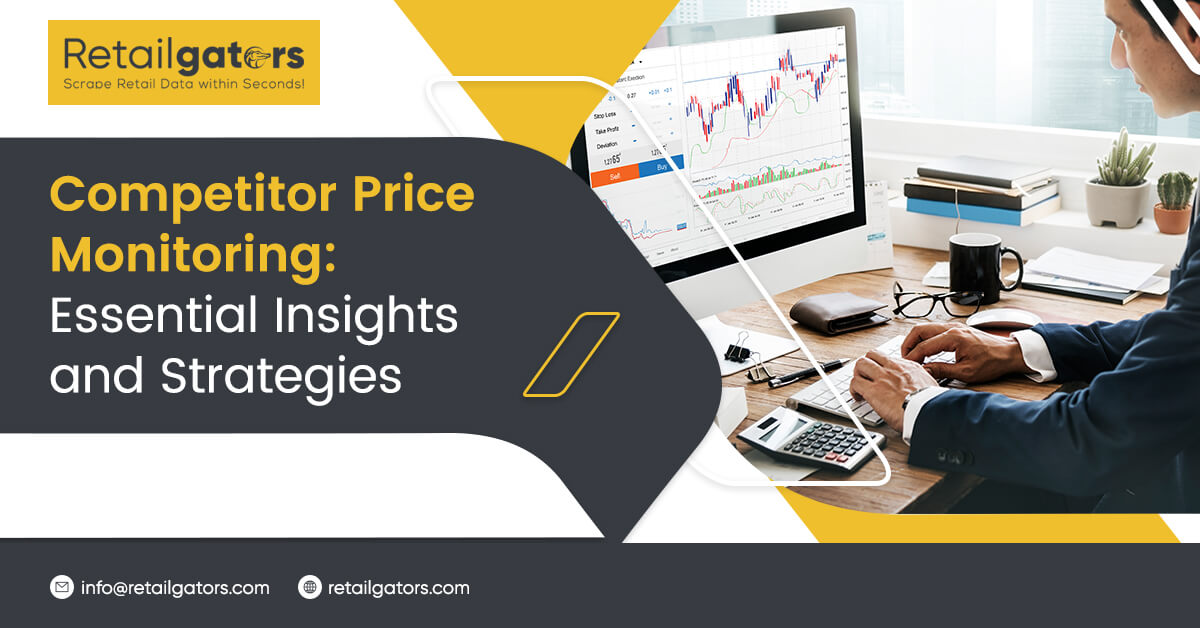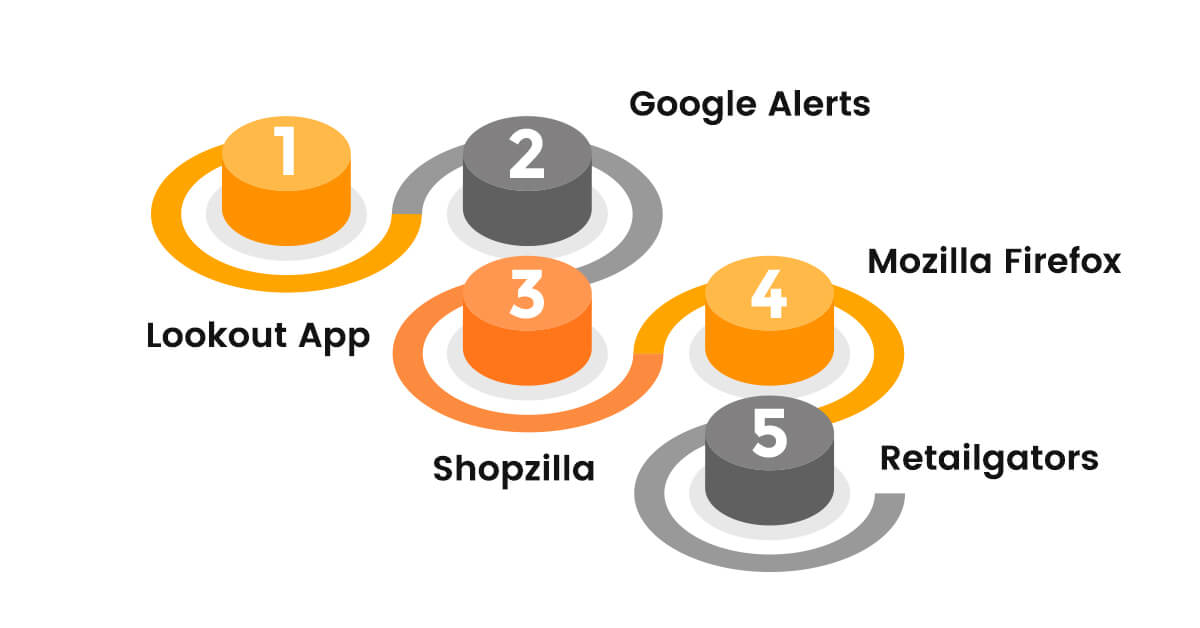
For those of you who have been in the retail industry for a long time, you know how easy it is to lose track of your competitors’ pricing strategies. You might get caught up in all the daily announcements and promotions and end up giving away sales without finding out how much money you're losing. Seeing your store constantly losing business while rivals are expanding their reach exponentially can be very disheartening.
Sadly, it is human nature to peer at our competitors. We examine every little thing they do, and it’s easy to get all worked up about the promotions and events they are running. Many stores lose business not because their prices are low but because they aren’t aware of what their competitors are doing.
That being said, you can only sometimes afford to ignore your competitors because the more you know about them, the more prepared you will be when it comes time to place orders. The correct information can help you prevent a potential disaster before it occurs. This article will teach you about competitor price monitoring, how to track your competitors’ pricing strategies and stay ahead of the game.
What is price monitoring, and why it's essential for businesses?

Because competitors have nearly identical products to yours, it's essential that you can track their prices. Price monitoring can help you determine what your competitors' price ranges are for every item and even for each category. Price monitoring is essential to conducting a wholesale business successfully. However, if you only take one lesson away from this article, remember that price monitoring is not just about pricing; it's about studying their strategies and staying ahead of the game.
The digital age has made price monitoring more accessible than ever. There are now a lot of tools you can use to watch what your competitors are doing and even to research their pricing strategies. For example, there is an app for almost every iPad or smartphone, meaning you can research whenever and wherever you want. You can even take notes from the app, so it will be easy to remember what was said about your competition's pricing.
Tools and software for price monitoring:
1. Lookout App:
Lookout has an arsenal of tools specifically for retail store owners. Using the Lookout app, you can monitor various pricing strategies from your competitors. It can also help you to find discounts by monitoring your competitors, finding the best deals, and viewing coupons or sales that are taking place.
2. Google Alerts:
Using Google Alerts, you can receive notifications when your competitors make changes to their websites. Google Alerts is especially useful if you have a physical retail location and want to know when an event or promotion occurs at a competitor’s store.
3. Shopzilla:
Shopzilla is highly similar to Google Alerts. You can set up alerts for various pricing strategies and store locations, and you will receive alerts when competitors change their websites.
4. Mozilla Firefox:
Mozilla Firefox has an extension that allows you to search various websites for information about pricing strategies and achievements. Extensions are specific for retail stores that provide the same information as Mozilla’s. The information these tools provide will vary from the general price monitoring tools offered by Lookout, Shopzilla, and Mozilla because they provide more in-depth reports that account for statistics and analytics regarding your competitors’ pricing strategies.
5. Retailgators:
Retailgators is a specialized web scraping service provider that specializes in price tracking and competitive intelligence with tools such as Competitive Intelligence, Performance Analysis, and Competitive Price Monitoring. Retailgators provide detailed information on your competitors' products, including product names, descriptions, photos, prices, and promotions. Retailgators can also help you track which tactics are effective for your competitors, allowing you to change your pricing strategy based on their results.
Identifying Competitors:
You must identify who your competitors are. In some cases, what may seem like a competitor might not be deemed a competitor by the government. Here are some examples of the distinctions between direct and indirect competition:
The types of businesses that directly compete against your business will usually be similar to the product or service offered, location, price range, and clientele. An example of a direct competitor is a retail store. If you have a retail store in the same area as other retailers, they are your direct competitors. You must know what they’re doing and offer similar products at the same price.
Indirect competition can include your business’s suppliers and buyers or even companies that sell similar products or services as your own but are located elsewhere or sell at different prices.
An example of indirect competition is if you’re a retailer selling apparel and accessories online.
Your customers frequently shop online at the same time as your competitors. It could result in one of your customers buying something your competitor sells and purchasing from you. Your competitors may have a large enough online presence or more competitive prices to capture some of your customers.
How to identify indirect competitors:
1. Scrape the contact information for the supplier and buyers of your products and services, along with their addresses, phone numbers, and emails.
2. Look for similar products or services sold by similar buyers and suppliers near you or in a nearby geographic area (and possibly within the same county).
3. Look at their websites to find out how they describe your products, the products they offer, and their prices. If you can identify similar products or services your competitors provide that are competitively priced, then they could be your indirect competitors.
How to monitor price changes:
If you know your competitors' prices now, you should monitor them over time. You want to know when they raise or lower their prices. You should also monitor their price changes at different times of the year and compare it to the same period last year. This will help you determine if they increase or decrease yearly prices.
It is also essential to check your competitor’s prices over time to see any trends in their prices, your own, and the market overall. This will help you know what actions you should take to increase sales and profits.
If you are a retailer of goods, it may be beneficial to monitor the prices of the wholesale goods that supply your business. You can do this by monitoring their websites or even visiting their stores. If the cost of these supplies increases or decreases, it will likely affect the price of your products or services. If their prices are rising, this would also be an ideal time for you to increase your cost.
If their prices decrease, however, you will have to decrease your prices to keep up with the competition. Nevertheless, any price decreases coming from your suppliers also mean that they offer a discount that you may want to advertise.
Conclusion:
You must understand the different types of competitors and how to monitor their prices. By comparing your competition's costs with yours, you will be able to determine what you should do to improve your profits. Monitor your competitors’ prices closely and see if any increases are coming. If they are decreasing, it may be a good time to decrease your price so you can compete effectively.








Leave a Reply
Your email address will not be published. Required fields are marked